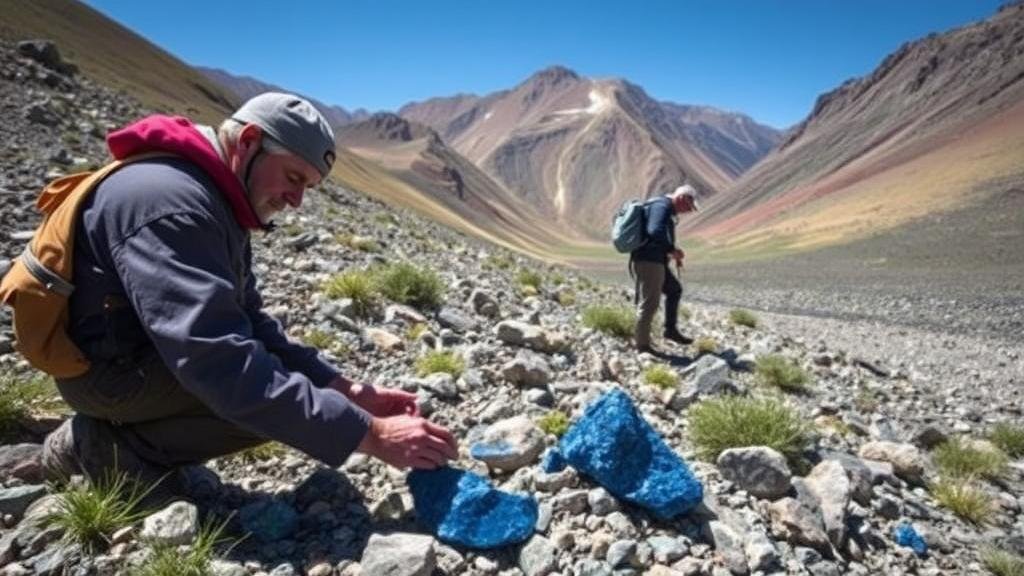Searching for lapis lazuli in the rugged Badakhshan Province of Afghanistan.
Searching for Lapis Lazuli in the Rugged Badakhshan Province of Afghanistan
For rockhounds and mineral collectors, few pursuits are as tantalizing as the search for lapis lazuli amidst the stunningly rugged terrain of Badakhshan Province in Afghanistan. This region, known as the historical source of lapis lazuli, offers mineral enthusiasts a rare opportunity to uncover one of the most coveted gemstones in the world.
Understanding Lapis Lazuli
Lapis lazuli is an intense blue metamorphic rock that has been valued for millennia, prized for its vibrant color and unique golden flecks of pyrite. Scientifically, it is primarily composed of lazurite, along with other minerals like calcite and pyrite. presence of lazurite gives lapis its characteristic deep blue hue, while the pyrite inclusions add an attractive sparkle.
This gemstone has a rich history, dating back to ancient civilizations in Mesopotamia, Egypt, and beyond, where it was used in jewelry, amulets, and even ground into powder for paint. With a Mohs hardness rating of 5 to 6, lapis lazuli is relatively soft compared to other gemstones, which means collectors should exercise caution in handling this beautiful mineral.
The Badakhshan Region: A Collectors Dream
Badakhshan Province is located in northeastern Afghanistan and is characterized by its mountainous landscape, which is part of the Hindu Kush range. This area is not only stunning in its natural beauty but is also known as one of the primary sources of lapis lazuli in the world. Sar-e-Sang mine in Badakhshan is particularly famous and has been in operation for centuries, providing incredible specimens to enthusiasts and jewelers alike.
For the aspiring mineral collector, here are some key reasons why Badakhshan is the ideal location for seeking lapis lazuli:
- Rich Geological History: The geological formations in this region contain layers of mineral deposits conducive to lapis lazuli. The surrounding rock and soil are rich in the necessary components for lapis formation.
- Locally Sourced Specimens: Collecting directly from the source often guarantees higher authenticity and quality. Local miners possess extensive knowledge of the best locations to search for this precious mineral.
- Cultural Significance: Lapis lazuli has been an integral part of Afghan culture for centuries, making the experience of searching for it even more enriching. Local artisans still craft beautiful pieces, providing an opportunity for collectors to appreciate the craftsmanship as well.
Practical Tips for Collectors
Embarking on a mineral hunting expedition in Badakhshan requires careful planning and awareness. Here are some practical tips for collectors:
- Research Local Laws: Understanding the legalities surrounding mineral collection in Afghanistan is crucial. Ensure permission from relevant authorities and respect local regulations.
- Travel Prepared: The region’s rugged terrain demands proper hiking gear. Durable boots, protective clothing, and ample water are essential for any field trip.
- Be Respectful: The local communities have worked for generations in lapis mining. Building relationships can enhance your experience and provide unique insights into the area’s geology and culture.
- Join Local Expeditions: Consider joining guided tours or groups that focus on mineral collecting. They can offer invaluable resources and knowledge about the best locales for finding lapis lazuli.
Conclusion: The Joy of the Hunt
Searching for lapis lazuli in Badakhshan Province is not just about the gemstone; it’s an experience that brings collectors closer to the rugged beauty and rich culture of Afghanistan. Each specimen unearthed is a piece of history, grounded in the earth and shaped by time. Whether a seasoned collector or a passionate beginner, the journey into the heart of Badakhshan promises to be an unforgettable adventure.
As you embark on your journey, remember that patience and respect for the environment and local communities are key. Happy hunting!



